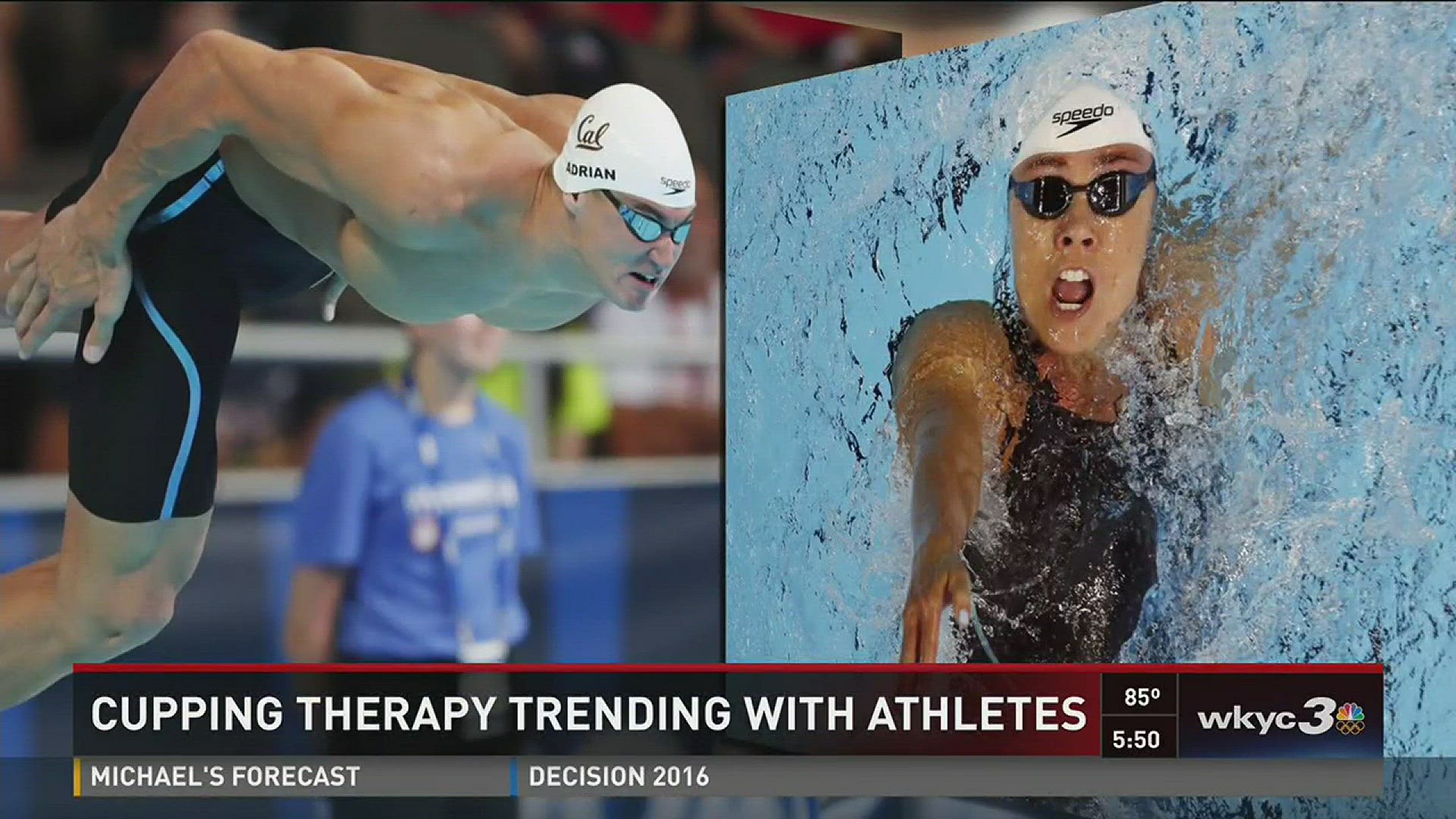How today's Olympic athletes recover from wear and tear on their bodies is nearly as important as how they train.
That's opened the door to unusual therapies and treatments; some dating back to ancient times and others that are a product of modern science.
If you look closely at the Olympic swimming venue, the talk of the pool isn't the latest technical suit.
It's the strange circles showing up on the backs, shoulders, arms and legs of swimmers.
What you are seeing is called "cupping" and those circles are indeed bruises.
The temporary discomfort that comes with the practice is worth it to athletes who believe this ancient practice can help propel them to victory.
Michael Phelps has turned to cupping to help aid recovery for his 31-year-old body.
He recently talked about the experience in a video he posted for his Facebook followers.
"Yeah, those are cup marks. Got cupped yesterday, probably going to get cupped today," Phelps said in the months leading up to Rio.
Fellow American gold medalists and swimming teammates Allison Schmitt, Nathan Adrian and Natalie Coughlin swear by its benefits too.
So what exactly is it, and what does it do?
"It looks a lot worse that it feels," explains Megan Kensigner, an amateur athlete who has cupping performed on her body to aid in recovery.
Natalie Semon of Camelback Sports Therapy explains the process.
"You take a vacuum pump to pull the air out of the cup and it lifts the skin," she said. This increases blood flow to the affected area, which can relax muscles and accelerate the recovery process in damaged or stressed areas.
"At first when they first put it on, it's a lot of pressure. It kind of takes your breath away. But after the first minute it relaxes and it is almost like a good stretch. You an almost feel the blood flow getting in there. It feels better," Megan explains as she undergoes the therapy.
"So it's actually promoting a system to allow the body to come in and regenerate itself," Natalie adds.
You don't have to be an elite or amateur athlete to benefit. This ancient Chinese form of acupuncture is also believed to help draw toxins from the body, stimulate circulation and the immune system.
"Whether you are a desk jockey, a weekend warrior, you are 15 or 70, this type of treatment is very beneficial," according to Natalie.
But as they say, it's going to leave a mark.
Cupping therapy can cost anywhere from $30 to $80 depending on the duration and area being treated. Those tell-tale spots can last anywhere from 5 days, up to 2 weeks.
The technique is also used to treat respiratory conditions like asthma, bronchitis and chronic cough, gastrointestinal conditions, and high blood pressure.
People who can not tolerate anti-inflammatory medication have turned to cupping for pain relief.
Cupping isn't for everyone. People who have delicate skin or a bleeding disorder, who are taking blood thinners or corticosteroids should abstain.
If you are interested in trying cupping, consult an integrative medicine practitioner, or a licensed acupuncturist.
The National Certification Commission for Acupuncture and Oriental Medicine, or NCCAOM can refer you to a qualified practitioner near you.
Watch the full story tonight on WKYC Channel 3 at 5 p.m.

